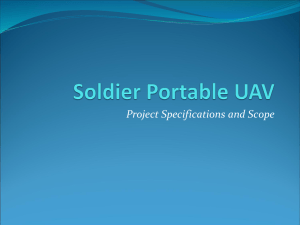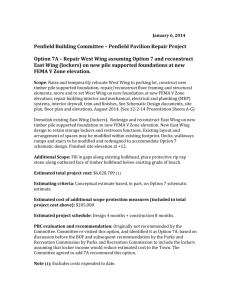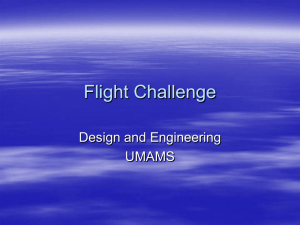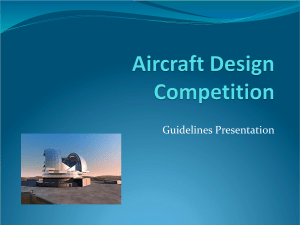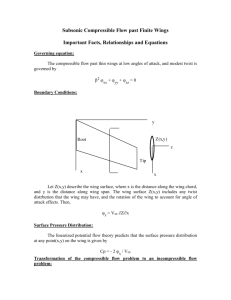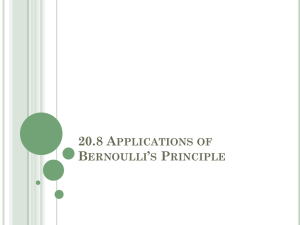Engineering
advertisement
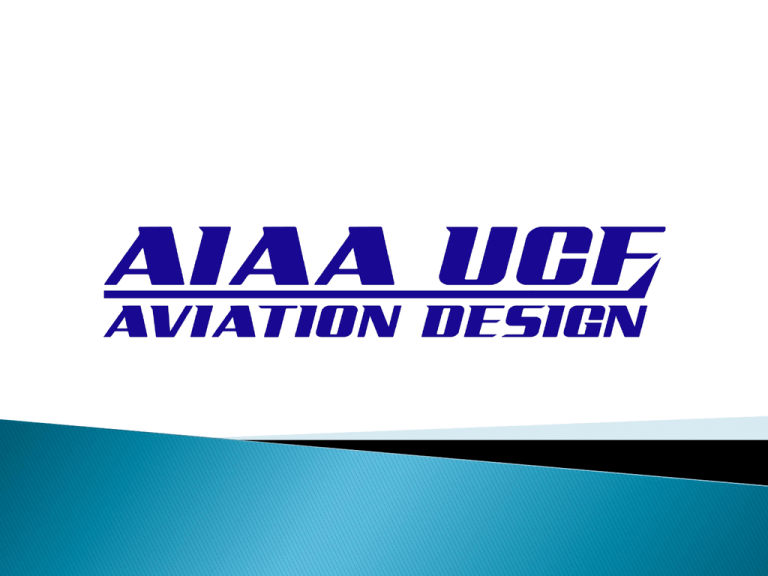
What is engineering? 1. Engineering - The branch of science and technology concerned with the design, building, and use of engines, machines, and structures. 2. Engineering - the discipline dealing with the art or science of applying scientific knowledge to practical problems Different Types of Engineering Aerospace Engineering Mechanical Engineering Material Engineering Environmental Engineering Computer Engineering Civil Engineering …ETC Aviation Design How does it tie into engineering? Aviation Design Teaches real principles and practices used in modern engineering Utilizes up to date software to design and draft aircraft Experiences reviews from professionals in the field. Learn hands on techniques of construction that can be universally applied. Receive direct feedback from student driven education Jobs!! Everyone wants a jobs. Why else go to school for 5 years?….(plug in for swep, inroads, career services ) Perks Extra curricular activity Experience working in groups to accomplish a goal Possibly leadership experience. Experience in a competitive setting Practical use of a CAD software of choice (solidworks or ProE) Drafting experience More Perks! Practical use of a CAD software of choice (solidworks or PreE) Drafting experience Experience making a build of materials (BOM) Experience with a budget Potentially a plaque in the engineering building Recognition my facility Even More Perks! Experience making a build of materials (BOM) Experience with a budget Potentially a plaque in the engineering building Recognition by facility Basic Overview of Class Layout Students will split into groups of 3-4 and work together. Each group will be assigned a number. They will then be responsible for picking a team caption. (group names are optional, but encouraged if witty) Each group will be allowed to compete in two out of three missions listed on the syllabus To complete missions groups will be responsible for designing, drafting and constructing a model aircraft that is capable! Your Missions Mission 1 - Ferry Flight A test of your planes speed and maneuverability Mission 2 - Passenger Flight A test of your planes ability to carry passengers safely while maintaining weight efficiency Mission 3 – Payload drop An optional third mission with a High reward but drastic consequences in terms of points if failed. See page 2 of syllabus for complete listing of rules Overview of what will be covered in today's class •How an Aircraft Flies Lift Thrust Drag •Airfoil Terminology Lift Drag Induced drag Total drag Drag curve How a Plane Flys Lift Thrust Drag Induced Induced Vs parasite wing over surface Drag How an Airplane Moves Aircraft Terminology Examples ….elevator up Plane of motion? How has the plane reacted? Examples ….rudder left Plane of motion? How has the plane reacted? Example ….left aileron up Plane of motion? How has the plane reacted? Aircraft Airfoil Terminology Engineering challenge ! Work in groups of four and come up with a solution to the following problem Overview of today's class •Center of Pressure •Center of gravity •Determining the center of gravity Mean aerodynamic cord Wing Design Low wing Mid-wing High aspect ratio Low aspect ratio Straight wings Swept wings Forward swept Back swept Center of Gravity How to find CG Wing Design Wing design follows these general steps: 1. 2. 3. 4. 5. 6. 7. 8. 9. Estimate the aircraft’s weight. Select a wing loading based on performance goals. Calculate wing area based off of wing loading. Select an aspect ratio based on performance goals. Determine wing span. Choose a wing planform. Determine chord lengths. Choose a dihedral angle and calculated tip height. Select an airfoil section. 1. Estimate the Aircraft’s Weight Take an estimate of all the required components for the aircraft to fly E.X. Cargo, fuel, landing gear, engine, fuselage weight…etc See excel sheet in dropbox labeled list of parts 2. Select a wing loading based on performance goals Wing loading is the amount of force per area Most R.C. planes range between .75 lb/ft^2 to 1.5 lb/ft^2 or 12 oz/ ft^2 to 24 oz/ ft^2 3. Calculate Wing Area Based off of Wing Loading Can be calculated by; W/S= Wing Loading Where; W= weight S= surface area 4. Select an Aspect Ratio Based on Performance Goals. Higher aspect ratios result in long thin wings Lower aspect ratios result in short stubby wings Typical aspect ratios for RC airplanes are between 5 and 8 5. Determine wing span Can be calculated by AR = b2/S using previously determined AR 6. Choose a wing planform 7. Determine chord lengths Various kinds as shown to left Elliptical Constant Tapered 8. Choose a dihedral angle and calculated tip height. Typical dihedral for RC airplanes are between 0 and 6 degrees 9. Select an airfoil section See excel sheet in dropbox labeled Equations sheet when picking airfoil Engineering challenge ! Work in groups of four and come up with a solution to the following problem Original design Easier new design What’s wrong with the new design?


